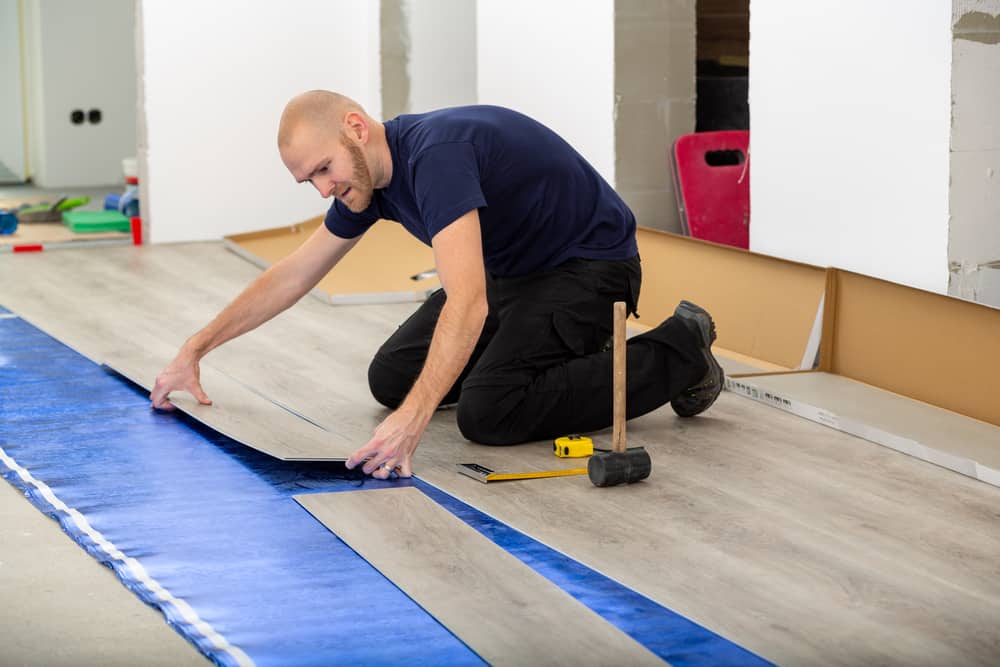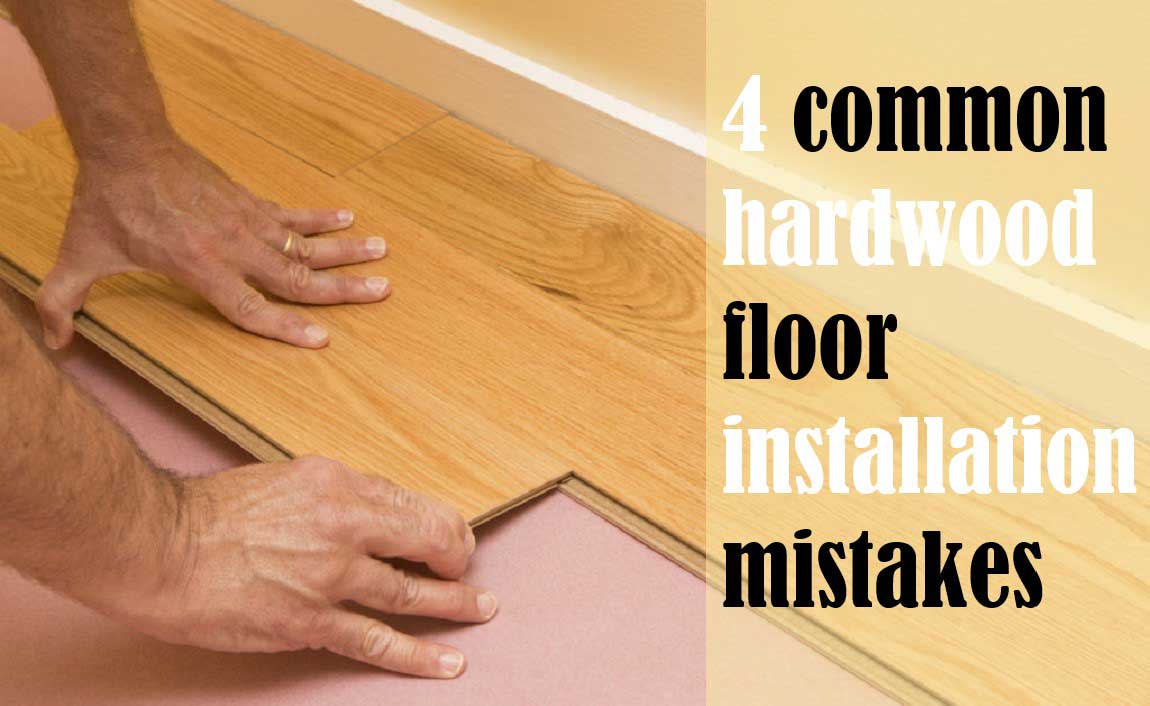Have you ever walked into a house with stunning wooden floors, only to be met with a disconcerting squeak with every step? Or perhaps you’ve marveled at the warmth and comfort of a perfectly laid wooden floor, wondering about the secret ingredient that made it so inviting. The answer, my friends, often lies in the unseen hero of flooring: underlay. But before you dive into the world of underlayment, let’s address the question that’s likely on your mind: do you really need it?

Image: www.whatisvinyl.com
This comprehensive guide will explore the significance of underlay for wooden flooring, diving into its benefits, types, installation, and everything you need to know to make an informed decision for your home.
What is Underlay for Wooden Flooring?
Imagine a cushion beneath your feet, absorbing the impact of every step and providing a comforting layer of support. That’s essentially what underlay does for your wooden floor. It’s a thin, flexible material placed between your subfloor and your wooden flooring, acting as an acoustic barrier, thermal insulator, and moisture barrier.
Why Use Underlay for Wooden Flooring?
Underlay isn’t simply an optional add-on; it’s a key element in creating a high-quality wooden floor that feels as good as it looks. Here’s a breakdown of its primary benefits:
1. Enhanced Comfort and Sound Reduction
Underlay acts like a sound-absorbing buffer, reducing noise transmission from foot traffic, furniture movement, and even the echoes that can arise in a room. This is especially beneficial for multi-level homes or if you want to create a peaceful and quiet environment.

Image: almahdihardwoodflooring.com
2. Improved Thermal Insulation
Underlay can help insulate your floor, preventing heat loss in winter and keeping your home cooler in the summer. This can lead to energy savings and a more pleasant indoor temperature.
3. Moisture Protection
In areas prone to moisture, like bathrooms or basements, underlay can act as a barrier against moisture damage. It can prevent moisture from seeping into your wooden floor, potentially extending its lifespan.
4. Greater Stability and Subfloor Levelling
Underlay can help smooth out minor imperfections in your subfloor, creating a more stable surface for your wooden floor. This can prevent unsightly gaps and unevenness in your flooring, ensuring a smoother and more beautiful installation.
Types of Underlay for Wooden Flooring
The underlay market offers a diverse range of options, each with its own strengths and suitability depending on your needs and budget. Here are some common types:
1. Foam Underlay
This type is known for its excellent sound absorption, making it ideal for reducing impact noise from foot traffic. Foam underlay is often cost-effective and comes in different densities, from softer to firmer, to cater to specific needs.
2. Rubber Underlay
Rubber underlay is known for its durability and ability to withstand heavy wear and tear. It offers good sound absorption and is often preferred for high-traffic areas.
3. Cork Underlay
Cork underlay is renowned for its eco-friendliness, natural insulation properties, and comfortable underfoot feel. It offers excellent sound absorption and is a good option for those looking for a sustainable flooring solution.
4. Acoustic Underlay
Specifically designed for noise reduction, acoustic underlay incorporates a dense, multi-layered construction to minimize sound transmission. It’s particularly well-suited for rooms where noise control is crucial, such as music studios or home theaters.
5. Moisture Barrier Underlay
As the name suggests, moisture barrier underlay is designed to protect your wooden floor from moisture damage. It often features a waterproof membrane and can be used in areas prone to moisture or spills.
When Underlay is Not Necessary
While underlay offers significant benefits, it’s not mandatory in every situation. Here are some instances where underlay might not be required:
1. New Subfloor Construction
If you are building a new home or doing a complete renovation with a brand-new subfloor, it might be deemed unnecessary to utilize underlay as the subfloor is already level and stable.
2. Flooring Over Concrete
Installing wooden flooring directly on concrete often doesn’t require underlay, as concrete is inherently soundproof and stable. However, in these cases, it’s crucial to use an appropriate moisture barrier to protect the wooden floor from moisture rising from the concrete.
3. Pre-Engineered Flooring
Certain types of engineered wood flooring, like those with an attached pad, may not require additional underlay. The built-in pad often incorporates insulation and soundproofing properties.
How to Choose the Right Underlay for Your Project
Selecting the appropriate underlay involves considering various factors:
1. Flooring Type
The type of wooden flooring you’re installing will influence your underlay choice. Solid hardwood flooring, for instance, typically benefits more from underlay for sound reduction and insulation than engineered wood flooring.
2. Subfloor Condition
If your subfloor is uneven, you’ll want to choose underlay with leveling properties. If your subfloor is stable and flat, you can opt for a thinner underlay focusing primarily on sound absorption or moisture protection.
3. Budget
Underlay options range in price, so it’s essential to factor in your budget. Foam underlay is typically the most cost-effective, while acoustic underlay and cork underlay tend to be more expensive.
4. Desired Benefits
Determine your priorities. If sound reduction is your primary concern, choose an underlay known for its acoustic properties. If insulation is your focus, opt for an underlay with excellent thermal insulation.
Installing Underlay for Wooden Flooring: A Step-by-Step Guide
Installing underlay is relatively straightforward. Here’s a step-by-step guide:
-
Prepare the Subfloor: Ensure your subfloor is clean, dry, and free from debris. Make any necessary repairs or level any uneven spots.
-
Lay the Underlay: Unroll the underlay, starting from one corner of the room, and smooth it out, ensuring it’s flat and free from wrinkles or bumps.
-
Overlap and Secure: Overlap the underlay seams by a few inches and secure them with a staple gun or adhesive.
-
Install the Flooring: Once the underlay is securely laid, you can install your wooden flooring according to the manufacturer’s instructions.
Expert Insights on Underlay for Wooden Flooring
Professional flooring contractors often emphasize the importance of underlay for achieving a quality and comfortable wooden floor. They recommend considering the specific needs of your project and choosing an underlay that aligns with those needs. They also highlight the significance of proper installation to ensure optimal performance and longevity of the underlay.
Do You Need Underlay For Wooden Flooring
Conclusion
Underlay for wooden flooring is a vital component in achieving a stable, comfortable, and aesthetically pleasing floor. It provides a range of benefits, from reducing noise and improving insulation to protecting your wooden floor from moisture damage. By understanding the different types of underlay, their advantages, and installation procedures, you can make informed decisions that align with your individual needs and budget. Don’t underestimate the power of this unseen element, as it plays a crucial role in creating a floor that stands the test of time and provides years of enjoyment.
If you’re embarking on a wooden flooring project, remember that choosing the right underlay can make a world of difference. Invest in a high-quality underlay, and you’ll reap the benefits of a quieter, warmer, and more comfortable floor for years to come.






